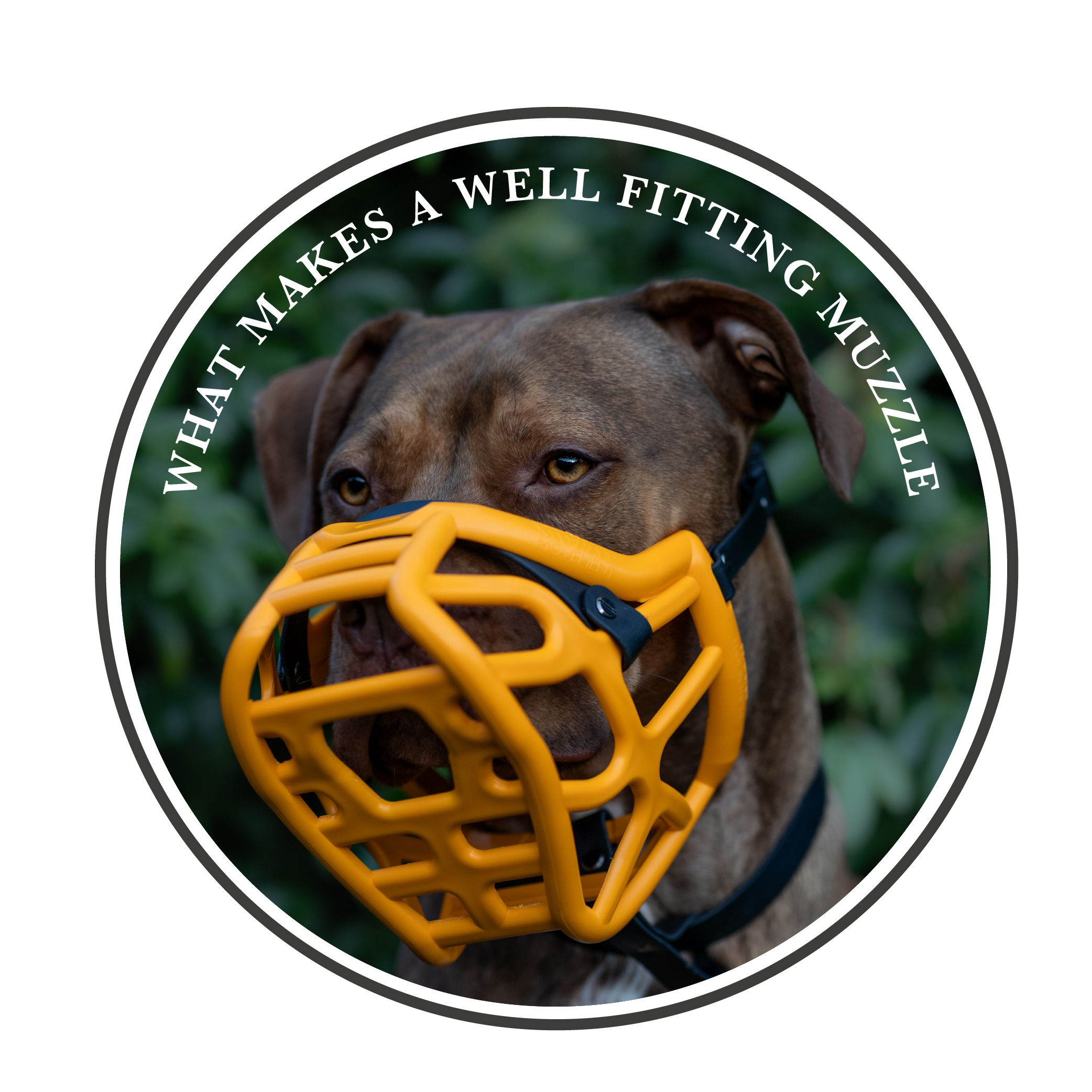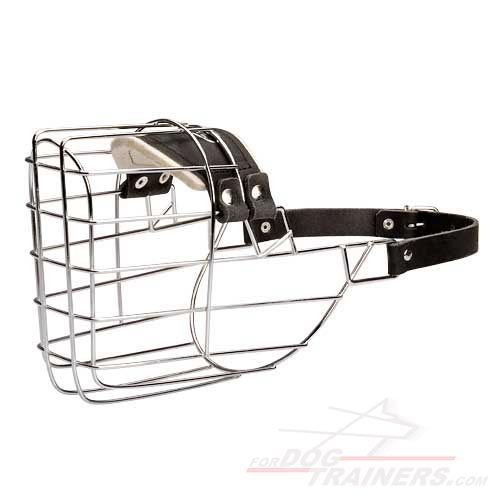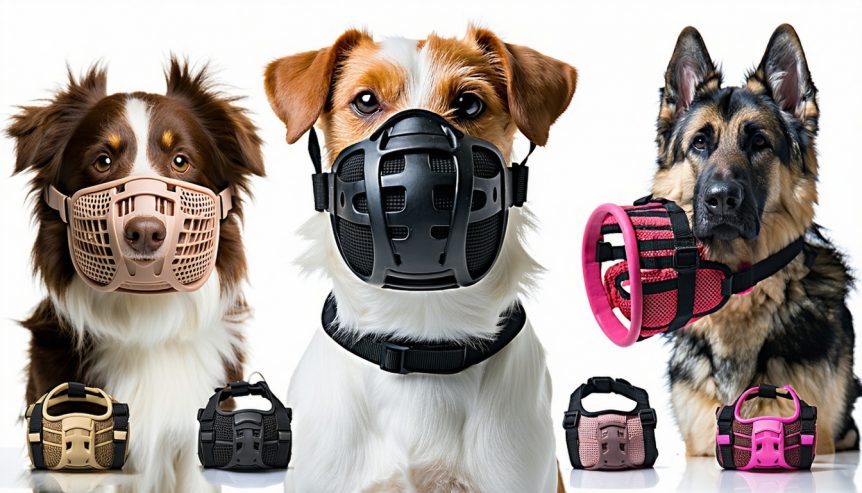Contents
Use in Emergency Situations
Imagine your pup injured and scared – not a good combo. In those nerve-wracking moments, dog muzzles become true lifesavers. They keep you and your furry buddy safe from unexpected chompers when they’re in panic mode. You ever try moving or helping an anxious dog without one? Things can get wild, fast. Muzzles act like a peace treaty between fear and safety. The AKC even gives muzzles a nod for preventing accidental bites when fear and pain take over. For more on this emergency must-have, hop over to the dog muzzle in emergency situations section. Check our Dog Muzzle Special Considerations fr more information.
Prevention of Dog Bites
If your dog has a nibble or two in their history, or if they just seem the type in certain scenes, muzzles can be your new best friend. They serve as a handy layer of protection, ensuring peace in situations that might otherwise spiral into chaos. But there’s a catch – muzzles stop bites, not the behavior fueling them. Teaming up with pros to tackle those behavioral quirks is the real fix. The AKC stresses smoothing out those behavioral wrinkles, not just slapping a muzzle on it. Check out our guide on dog muzzle for behavioral issues for a deeper look.
Recognizing dog muzzles as both emergency aids and bite blockers keeps everyone – furry and human – out of harm’s way. While they’re nifty alone, pairing a muzzle with solid training gets gold stars all around. For more pearls of wisdom, peek at our insights on dog muzzle for breed-specific needs and dog muzzle for medical conditions.
When to Think About Using a Muzzle
Knowing when to slap a muzzle on your four-legged buddy can help keep them, and everyone else, safe and sound. Here’s a couple of times you might need one around.
History or Risk of Biting
Got a nipper on your hands or worried your dog might suddenly get a bit too bitey? A muzzle is your friend. Even if they’ve never sunk their teeth into someone, certain situations might ramp up their reaction. Popping on a muzzle can prevent trouble and ease your nerves. The AKC mentions muzzles as a smart way to handle potential biting cases.
- If your pooch has shown aggression
- High-stress scenarios
- Around folks or animals your dog doesn’t know
Check out our dog muzzle for behavioral issues page for more info.
Grooming Sessions
Does your pup get fussy around the groomer? Grooming can be a nerve-racker for some dogs, especially if it’s all new to them or they’ve had a tough time in the past. A muzzle can make grooming safer for both your pet and the person wielding the clippers. It’s no laughing matter when it comes to nail clipping or ear cleaning. The AKC points out that a muzzle helps keep those grooming sessions chill.
- Nail trims and ear checks
- Meeting a new groomer
- Dogs getting used to new grooming routines
Need more details? Swing by our page on dog muzzle for breed-specific needs.
By getting clued up on these scenarios, you can decide when to use a muzzle, keeping your pup comfy and secure. For more handy hints, dive into our piece on dog muzzle for senior dogs.
Choosing the Best Dog Muzzle
Picking the right muzzle for your pooch isn’t just a matter of fashion—it’s about getting the fit and style spot on to keep your dog comfy, safe, and just a wag more agreeable.
Proper Fit and Sizing
When it comes to muzzles, size matters. It’s all about the snout. Well, the length and the diameter, to be exact. You want it fitting like Goldilocks would—just right, not too tight, loose, or restricting. Here’s the scoop:
- Snout Length: Measure from about half an inch under the eyes to half an inch past the sniffer.
- Snout Diameter: Wrap the tape measure around the chubbiest part of the mouth and give it a little slack for breathing room.
Got a dog with a nose for trouble—or just a different snout shape? You might need a special fit or some crafty alterations so the muzzle sits snugly without causing discomfort. Think of it like a comfy pair of running shoes—you know, minus the shopping spree.
| What to Measure | How to Measure | Example Size (inches) |
|---|---|---|
| Snout Length | From just below eyes to beyond the nose | 4 |
| Snout Diameter | Around the broadest part of the mouth | 12 |
Safety also means letting the dog pant easily. So, ensure the muzzle isn’t a straightjacket and has nice airflow, especially if your buddy’s up and about for some exercise. And don’t forget those sturdy straps—they’re a lifesaver to stop your Houdini dog from slipping out of it while your back’s turned!
Types of Muzzles
Picking a muzzle is like picking a tool for a job: you’ve gotta know what you’re using it for. Do you need it for everyday use, or is it just when your dog’s gotta behave for a quick groom or vet trip? Let’s break it down:
- Basket Muzzles: Great all-around choice—they let the dog breathe, pant, and even have a drink.
- Soft/Cloth Muzzles: Good for the short term, like clipping their nails, but not for long stretches—they can be a little breath-stealing.
- Leather Muzzles: Tough as old boots, but got enough give for comfort. Nice for when training’s the name of the game.
- Polyester/Plastic Muzzles: Lightweight and a breeze to clean, they’re your go-to for short errands or vet visits.
| Type of Muzzle | Features | Best Used For |
|---|---|---|
| Basket Muzzle | Lets them breathe, drink, and pant freely | Daily use, long periods |
| Soft/Cloth Muzzle | Light, but restricts panting | Quick grooming sessions |
| Leather Muzzle | Strong yet comfy | Training, safety |
| Polyester/Plastic Muzzle | Light, easy cleanup | Vet checks, speedy outings |
You’ve gotta think about what you and your dog need most. Is it their breed, a peculiar health issue, or a quirky behavioral tick that’s pointing you to a particular muzzle? Choose wisely, because comfort’s key!
For a gander at more tips on safe muzzle use, whether in an emergency, for the older furry friends, or the woofers with jobs, check out our other guides. They’re packed with practical advice for every pup’s paw-spective!
Best Practices for Muzzle Training
Getting your dog to accept and feel comfy with a muzzle takes some know-how and patience. Here are some friendly tips to make the process smooth and safe for both of you.
Acclimating Your Dog
Ease your dog into wearing a muzzle by taking things slow and chill. Patience and positive vibes are crucial here. Let’s break it down:
- Introduction: Let your dog get familiar with the muzzle. Show it to them, let ’em sniff it out, and toss some treats for any interest they show.
- Touch Training: Slowly touch your dog’s nose with the muzzle, giving treats each time. This way, Fido starts linking that pesky muzzle with happy thoughts.
- Wearing Practice: Place the muzzle gently over their nose, but don’t strap it on just yet. Toss a few more treats and repeat until they’re cool with it.
- Short Sessions: Once they seem chill with it, fasten the muzzle and keep the sessions short. Treats are your buddies here, and over time, gradually extend these sessions.
Get more tips on muzzle training by hopping over to our articles on dog muzzle for behavioral issues and dog muzzle in emergency situations.

Ensuring Comfort and Safety
Making sure your dog feels comfy and secure while sporting a muzzle is the name of the game. Here’s the skinny:
Proper Fit: The muzzle should fit snug—neither too tight nor too loose. Your dog should be able to pant and sip water without a hitch. A poor fit can cause discomfort and anxiety.
Material and Design: Go for muzzles made from soft, tough materials. Rough edges are a no-no—they can irritate your pup’s coat. Extra features like harnesses and bands might add a bit of comfort but aren’t must-haves. The Muzzle Movement.
Observation: Keep an eye on your dog when they’re wearing a muzzle. Never leave them flying solo with it on—anxiety or accidents could ensue.
Breaks: Breaks during training? Absolutely! They help prevent overheating and keep everyone comfy.
Temperature and Duration Factors
| Training Stage | Duration (minutes) | Frequency |
|---|---|---|
| Initial Introduction | 1-2 | A few times a day |
| Wearing Practice | 2-5 | Several instances |
| Prolonged Sessions | 10-15 | Once a day |
Following these handy tips will have your dog wearing a muzzle effortlessly and safely. For more training specifics, check out our articles on dog muzzle for breed-specific needs and dog muzzle for medical conditions.
Conclusion
Dog muzzles are valuable safety tools that, when used properly, protect both dogs and people in various situations. Whether you’re dealing with emergency circumstances, grooming sessions, or managing a dog with a history of biting, the right muzzle can make all the difference in keeping everyone safe and comfortable.
Remember that a muzzle is not a cure-all solution for behavioral problems—it’s a management tool that should be paired with proper training and professional guidance when addressing underlying issues. The key to successful muzzle use lies in choosing the correct type and size for your dog’s specific needs, followed by patient, positive training to help your pup accept wearing it.
Taking the time to properly introduce your dog to a muzzle through gradual acclimation and ensuring their comfort and safety throughout the process will lead to better outcomes for everyone involved. With the right approach, a muzzle becomes just another piece of equipment that helps keep your furry friend safe while allowing them to participate fully in necessary activities like veterinary care and grooming.
Ultimately, responsible muzzle use is about preparation, patience, and prioritizing your dog’s well-being while maintaining safety for all.
Choose the Perfect Muzzle for Every Adventure
When it comes to your dog’s comfort, safety, and control, choosing the right muzzle is essential—and we’re here to help you make the best choice. Our range of muzzles is designed to meet the unique needs of every dog and owner, from professional K9 handlers to devoted pet parents.

1. Adjustable Wire Cage Dog Muzzle for Everyday Walking and Training
- Leather parts: 3.5-4.5mm full grain leather,
- Hardware: nickel-plated Steel
- Padding: leather nose part that is padded with thick felt, A soft felt lining is sewn into the upper part of the muzzle, stitched with reinforced thread
- Stitching: Marine-grade

2. Well-Ventilated Metal Wire Basket Muzzle with Felt Padded Nose
- Leather parts: 3.5-4.5mm full-grain leather
- Hardware: chrome plated steel
- Padding: soft high-quality natural felt
- Stitching: Marine-grade
3. Leather Dog Muzzle for Military, Police and Agitation Training

- Leather parts: thick full grain leather, leather protection on the sides
- Padding: soft high-quality natural felt
- Fittings: chrome plated steel
- Sewn-in metal plate in the front part
Discover Our Full Professional K9 Line
Ready to equip your K9 with professional-grade gear? Visit our complete collection at Dog Muzzles to explore our full range of professional K9 equipment, including:
Follow us on social media to stay updated on new product releases, training tips from professional handlers, and exclusive offers:

